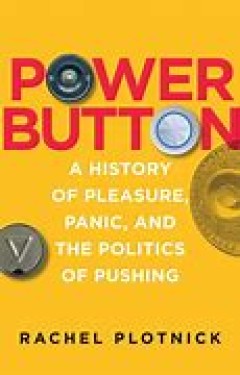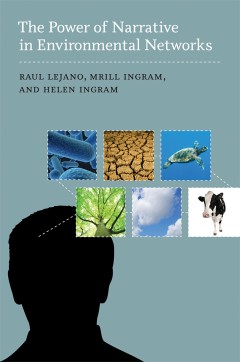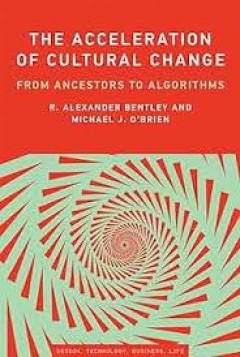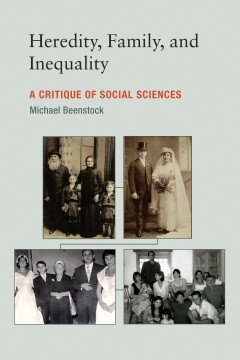Filter by

The Environmental Humanities: A Critical Introduction
A concise overview of this multidisciplinary field, presenting key concepts, central issues, and current research, along with concrete examples and case studies. The emergence of the environmental humanities as an academic discipline early in the twenty-first century reflects the growing conviction that environmental problems cannot be solved by science and technology alone. This book offers…
- Edition
- -
- ISBN/ISSN
- 9780262342292
- Collation
- -
- Series Title
- -
- Call Number
- 004 DAU a

Power Button: A History of Pleasure, Panic, and the Politics of Pushing
Push a button and turn on the television; tap a button and get a ride; click a button and "like" something. The touch of a finger can set an appliance, a car, or a system in motion, even if the user doesn't understand the underlying mechanisms or algorithms. How did buttons become so ubiquitous? Why do people love them, loathe them, and fear them? In Power Button, Rachel Plotnick traces the ori…
- Edition
- -
- ISBN/ISSN
- 9780262347501
- Collation
- 1 online resource
- Series Title
- -
- Call Number
- -

The Power of Narrative in Environmental Networks
For as long has humans have lived in communities, storytelling has bound people to each other and to their environments. In recent times, scholars have noted how social networks arise around issues of resource and ecological management. This book argues that stories, or narratives, play a key role in these networks - that environmental communities 'narrate themselves into existence'. The book p…
- Edition
- -
- ISBN/ISSN
- 9781461937128
- Collation
- 1 online resource (xiv, 225 pages) :illustrations, map.
- Series Title
- -
- Call Number
- -

Script and Society the Social Context of Writing Practices in Late Bronze Age…
By the 13th century BC, the Syrian city of Ugarit hosted an extremely diverse range of writing practices. As well as two main scripts – alphabetic and logographic cuneiform - the site has also produced inscriptions in a wide range of scripts and languages, including Hurrian, Sumerian, Hittite, Egyptian hieroglyphs, Luwian hieroglyphs and Cypro-Minoan. This variety in script and language is ac…
- Edition
- -
- ISBN/ISSN
- 9781789255867
- Collation
- -
- Series Title
- -
- Call Number
- -

A Mid-Republican House From Gabii
Since 2009 the Gabii Project, an international archaeological initiative led by Nicola Terrenato and the University of Michigan, has been investigating the ancient Latin town of Gabii, which was both a neighbor of, and a rival to, Rome in the first millennium BCE. The trajectory of Gabii, from an Iron Age settlement to a flourishing mid-Republican town to an Imperial agglomeration widely though…
- Edition
- -
- ISBN/ISSN
- 9780472999002
- Collation
- -
- Series Title
- -
- Call Number
- 930.1 MID m

The acceleration of cultural change :from ancestors to algorithms
From our hunter-gatherer days, we humans evolved to be excellent throwers, chewers, and long-distance runners. We are highly social, crave Paleolithic snacks, and display some gendered difference resulting from mate selection. But we now find ourselves binge-viewing, texting while driving, and playing Minecraft. Only the collective acceleration of cultural and technological evolution explains t…
- Edition
- -
- ISBN/ISSN
- 9780262343053
- Collation
- 1 online resource.
- Series Title
- -
- Call Number
- -

A History of Agriculture and Prices in England
Since early times, agriculture has been pivotal to England's economy. This is the sixth in a magisterial seven-volume, eight-piece compilation by the economist James E. Thorold Rogers (1823–90), which represents the most complete record of produce costs in England between the thirteenth and eighteenth centuries. Drawing on a variety of sources including college archives and the Public Record …
- Edition
- -
- ISBN/ISSN
- 9781139094825
- Collation
- -
- Series Title
- Cambridge Library Collection - British and Irish History, General
- Call Number
- -

What the Future Holds: Insights from Social Science
Social scientists from various disciplines discuss and offer predictions about the future.Predicting the future is notoriously difficult. But systematic analysis leads to clearer understanding and wiser decisions. Thinking about the future also makes social scientists focus their research into the past and present more fruitfully, with more attention to key predictors of change.This book consid…
- Edition
- -
- ISBN/ISSN
- 9780262270786
- Collation
- 1 online resource (285 pages)
- Series Title
- -
- Call Number
- -

Global Metal Music and Culture: current directions in metal studies
This book defines the key ideas, scholarly debates, and research activities that have contributed to the formation of the international and interdisciplinary field of Metal Studies. Drawing on insights from a wide range of disciplines including popular music, cultural studies, sociology, anthropology, philosophy, and ethics, this volume offers new and innovative research on metal musicology, gl…
- Edition
- 1
- ISBN/ISSN
- 9781317587248
- Collation
- -
- Series Title
- -
- Call Number
- 780

Heredity, Family, and Inequality: A Critique of Social Sciences
Empirical literature in disciplines ranging from behavioural genetics to economics shows that in virtually every aspect of life the outcomes of children are correlated to a greater or lesser extent with the outcomes of their parents. Beenstock offers theoretical and methodological tools for understanding these correlations.OCLC-licensed vendor bibliographic record.
- Edition
- -
- ISBN/ISSN
- 0262301385
- Collation
- 1 online resource (viii, 474 pages) :illustrations
- Series Title
- -
- Call Number
- -
 Computer Science, Information & General Works
Computer Science, Information & General Works  Philosophy & Psychology
Philosophy & Psychology  Religion
Religion  Social Sciences
Social Sciences  Language
Language  Pure Science
Pure Science  Applied Sciences
Applied Sciences  Art & Recreation
Art & Recreation  Literature
Literature  History & Geography
History & Geography